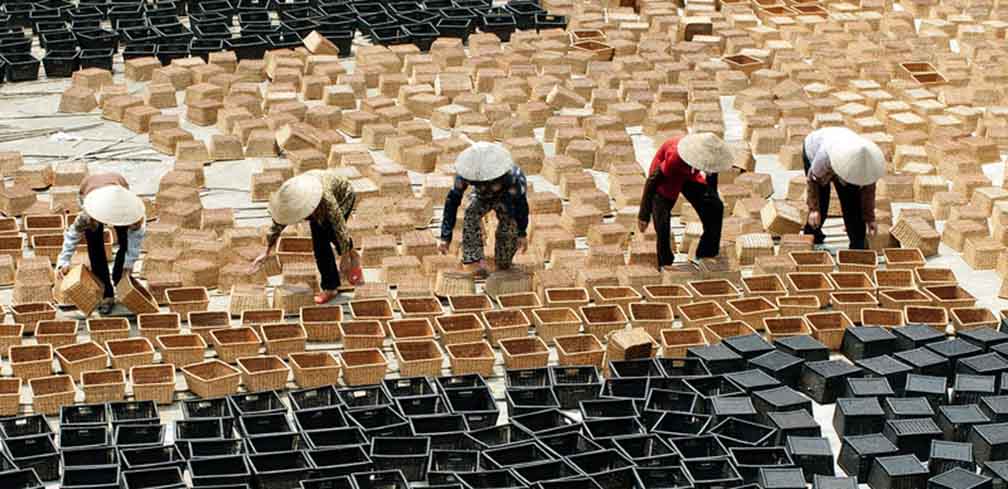Main Products: Basket
Ethnic Minority: kinh
From Noi Bai Airport (Hanoi): 91 km
From Tan Son Nhat Airport (HCMC): 1075 km
Thai Binh, known for its immense rice fields, is home to granaries and fragrant rice. Not only famous for agriculture, the province is also renown for its many craft villages such as silver plating in Dong Xam, silk weaving in Nam Cao, embroidery in Minh Lang, and especially rattan wares in Kim Bang, Luc Nam, and Luc Bac of Thai Xuyen commune.
Rattan ware is a main income source for villagers in Thai Xuyen. Being of a seacoast region, Thai Xuyen is endowed with fertile soil, green fields, and verdant and plentiful rattan growing along the village lane. These features are sufficient enough to make the people here so happy and motivated to continue for the foreseeable future their role as the skilled weavers of rattan.
Rattan is always nearby the Thai Xuyen villagers, and traditionally they grew it around the house as a protective fence. No one knows when rattan began growing and developing here, but the persons who were the catalysts for rattan ware development in Thai Xuyen were Nguyen Quang Xiu and Nguyen Ngoc Khanh who started the profession shortly after the beginning of the 20th century. Thai Xuyen villagers have accumulated production skills to make thousands of kinds of products such as flower baskets, boxes, bags, trays, and containers attracting the attention of many foreigners, especially those from Japan, America, Germany, Spain, and Taiwan serving as prime examples. As a result, dozens of billions of Vietnam dong return annually in the form of export revenues.
The attraction of Thai Xuyen rattan wares is not only from the charm and wide-diversification of the products but also from the harmonious combination of natural materials and artistic colors. A finished product must have gone through many steps - drying, varnishing, polishing, and coloring that create a superb piece. Not limited to that, Thai Xuyen rattan wares are usually combined with rush, jute, and especially rattan core that result in distinguished characteristics that separate them from those of other villages.
There are specialized stages in production. Each household carries on its own stage with one specializing in rattan harvesting, another specializing in the splitting of materials, and the majority concentrating on rattan knitting. The finishing steps are made concentratively to ensure constant quality of the finished products.
Responsive to the strengths of the handicraft, many businesses have been established to introduce the rattan wares of Thai Xuyen to many countries in the world. An example of one of the notable ones is Ta Van Binh, a private enterprise exporting three to four containers monthly, creating hundreds of jobs. Handicraft industrial clusters will evolve very soon, and Thai Xuyen will be a promising land with its own trademark for instant recognition.



